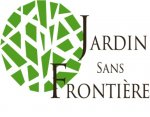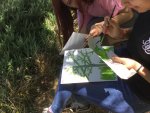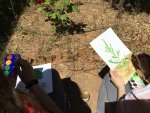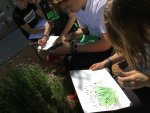accueil site > 45. Archives > Paysage et patrimoine > 12. Pedagogic tools > 17. Pedagogic tools > 0997. 25 - Drawing plants from life
-
45. Archives
-
Paysage et patrimoine
-
01. Fiches pédagogiques
Disciplines
-
01. Teaching materials
Disciplines
-
02. Jardin sans frontière : une école pour développer les compétences -clés en Europe
- 04. Partenaires
- 05. Rencontres transnationales
- 14. À l’école du jardin. Mobilités de formation dans les jardins d’Europe
- 15. À l’école européenne du jardin. Paroles de formateurs sur leurs formations "entre pairs"
- 16. A l’école auropéenne du jardin. Paroles d’apprenants sur leurs mobilités Erasmus+
- 19. Petit glossaire "européen" du jardin
- 20. Dissémination
- 21. Exploitation locale du projet
- 03. Un nouvel Erasmus+ : Le bleu européen comme étendard contre l’exclusion des adultes
-
09. Erasmus+ partenariato
-
Cammini del Blu in Europa
- 01. Incontri transnazionali
- 05. Progetti blu di partners
- 10. Percorsi europei del Blu
- 20. Storie blu
- 40. Disseminazione
- 43. Transcultural Carpet Blue
- 45. Missive blu
- 46. Glossario blu
- 47. Schede didattiche "Pedagogia del colore blu in Europa"
- 48. Illustrazioni delle schede didattiche : Mostra delle opere degli studenti
-
Giardino senza frontiere. Una scuola per lo slivuppo di competenze chiave in Europa
- 04. Partners
- 05. Riunioni transnazionali
- 14. Alla scuola del giardino. Mobilità di formazione nei giardini d’Europa
- 15. Alla scuola del Giardino. Parole di formatori sul loro addestramento "tra pari"
- 16. Alla scuola del giardino. Parole dei discenti sul loro Erasmus + Mobilità
- 19. Piccolo glossario europeo del giardino
-
Cammini del Blu in Europa
-
11. Erasmus+ Partnership
- 01. Transnational Meetings
- 05. Blue Projects of partners
- 07. European roads of the Blue
- 10. Blue stories
- 40. Dissemination
- 43. Transcultural Carpet Blue
- 45. Blue Missives
- 46. Blue Glossary
- 48. Roads of the blue : the file
- 50. Illustrations of the pedagogic file : exhibition of works of learners
-
51. Garden Without Borders : A School for Developing Key Competences in Europe
- 04. Partners
- 05. Transnational meetings
- 14. At Garden School. Training mobilities in the gardens of Europe
- 15. At Garden School. Words of trainers on their "peer-to-peer" training
- 16. At Garden School. Learners’ words about their mobility Erasmus +
- 19. Small European glossary of the garden
- 20. Dissemination
-
11. Partenariats Erasmus+
-
01. Les chemins du bleu en Europe
- 01. Rencontres transnationales
- 05. Projets bleus des partenaires
- 10. Routes du Bleu en Europe ...
- 20. Histoires Bleues
- 40. Dissémination
- 43. Transcultural Carpet Blue
- 45. Missives bleues
- 46. Glossaire bleu
- 47. Formation pédagogique : fiches pédagogiques et référentiel de compétences clés et transversales
- 50. Illustrations des fiches pédagogiques : exposition des travaux des apprenants
-
01. Les chemins du bleu en Europe
- 12. Pedagogic tools
- 17. Fiches pédagogiques
- 17. Schede Pedagogiche
-
01. Fiches pédagogiques
- 05. Livre d’or des formations
- 07. Livre d’or des formations Comenius - Grundtvig
- 10. National
- 20. International
-
Paysage et patrimoine
0997. 25 - Drawing plants from lifesamedi 15 septembre 2018
PROJECT
To implement drawings of plants in their natural habitat by choosing the garden as a personal laboratory, source of inspiration and experimentation. The students have taken possession of different spaces of the garden where they have chosen the plants to be closely observed, touched, breathe, in order to employ them as subjects of a visual art herbarium. The artistic aspect prevails here, however the whole activity displays cross-curricular elements to favour the learning of transversal and key competences.
PUBLIC
High school students who have chosen the optional learning of Visual and Audiovisual Arts.
This activity has been the subject of an exhibition at the University of Granada, from 16 to 20 October 2018, within the activities related to the third training and learning mobility of the project
KEY COMPETENCES
![]() Communication in the mother tongue
Communication in the mother tongue
![]() Learning to learn
Learning to learn
![]() Social competences and citizenship
Social competences and citizenship
![]() Humanist culture and expression of sensitivity
Humanist culture and expression of sensitivity
OBJECTIVES
![]() To employ the direct contact with the garden plants to develop creativity, imagination and artistic expression
To employ the direct contact with the garden plants to develop creativity, imagination and artistic expression
![]() To be interested in the visual qualities of plants : aspect of their branches, leaves, ribs, colours and matter. Collectively, produce a painted herbarium, a kind of artistic collection taking on meaning in the history of arts.
To be interested in the visual qualities of plants : aspect of their branches, leaves, ribs, colours and matter. Collectively, produce a painted herbarium, a kind of artistic collection taking on meaning in the history of arts.
![]() To develop a cross-curricular approach to the plant garden involving mastering the language, arts and sciences.
To develop a cross-curricular approach to the plant garden involving mastering the language, arts and sciences.
GARDENS EXPLORED
The garden of IES Escultor Sanchez mesa de Otura (Granada)
MATERIALS
![]() Computer, tablet or camera
Computer, tablet or camera
![]() Drawing notebook, watercolour paper
Drawing notebook, watercolour paper
![]() Pencils of different types, watercolours
Pencils of different types, watercolours
DEVELOPMENT
![]() Premise : to collect excerpts from literary and poetic texts, little stories around the garden and copy them down on a notebook
Premise : to collect excerpts from literary and poetic texts, little stories around the garden and copy them down on a notebook
![]() To walk through the garden holding your notebook. Observe and take note of what you like seeing, enrich the notes with information and accounts about the plants observed
To walk through the garden holding your notebook. Observe and take note of what you like seeing, enrich the notes with information and accounts about the plants observed
![]() To detailed observation of plants and flowers and annotation on the notebook
To detailed observation of plants and flowers and annotation on the notebook
![]() The students choose the insects they want as models for their drawings and paintings
The students choose the insects they want as models for their drawings and paintings
![]() To draw sketches in the sketchbook. Photographic report of the details
To draw sketches in the sketchbook. Photographic report of the details
![]() In the classroom, to draw and to paint on watercolour paper employing different techniques
In the classroom, to draw and to paint on watercolour paper employing different techniques
![]() To be aware how much scientific culture accounts for a personal enrichment, a relationship with the world through arts.
To be aware how much scientific culture accounts for a personal enrichment, a relationship with the world through arts.
EVALUATION
It takes into account the ability to :
Communicate orally and in writing in the mother tongue
- Correct use of the oral and written language
![]() Building up a personal notebook starting from the ’bestiary of insects’
Building up a personal notebook starting from the ’bestiary of insects’
![]() Expression of ideas, knowledges, opinions
Expression of ideas, knowledges, opinions
Develop competences related to awareness and cultural expression
![]() Promotion of one’s personal enrichment and attitude to relate with the world around through the scientific and artistic culture
Promotion of one’s personal enrichment and attitude to relate with the world around through the scientific and artistic culture
![]() Using artistic creation as a means of personal expression
Using artistic creation as a means of personal expression
![]() Practising visual arts – painting and drawing - to reproduce insects with regard to its aesthetic forms
Practising visual arts – painting and drawing - to reproduce insects with regard to its aesthetic forms
![]() Being able to conform to a specific subject or a particular environment in order to develop one’s own creativity
Being able to conform to a specific subject or a particular environment in order to develop one’s own creativity
![]() Using the results of close observations of the animal world as a vehicle for the artistic creativity
Using the results of close observations of the animal world as a vehicle for the artistic creativity
Learn how to learn. Learn how to realize an artistic project, set up its organization, its phases and self-evaluation
Develop social and civic competences. Learn how to get involved in the project taking responsibility of a part of it.
AUTHOR
![]() Maria del Carmen Casa Ubeda, Visual Artist. Teacher of Visual Arts and audiovisuals.
Maria del Carmen Casa Ubeda, Visual Artist. Teacher of Visual Arts and audiovisuals.
![]() IES Escultor Sanchez Mesa de Otura (Granada) educational centre connected with the pedagogical team of Granada coordinated by the Botanical Garden of the University of Granada, Spain
IES Escultor Sanchez Mesa de Otura (Granada) educational centre connected with the pedagogical team of Granada coordinated by the Botanical Garden of the University of Granada, Spain
TRANSLATER
Mary Gino
Association Acquamarina, Trieste, Italie















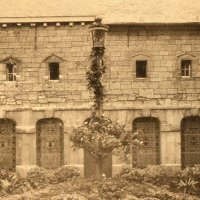
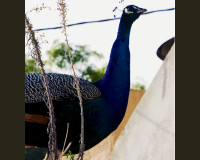
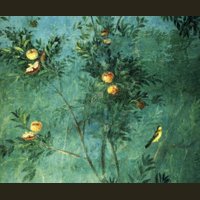
 Version imprimable
Version imprimable